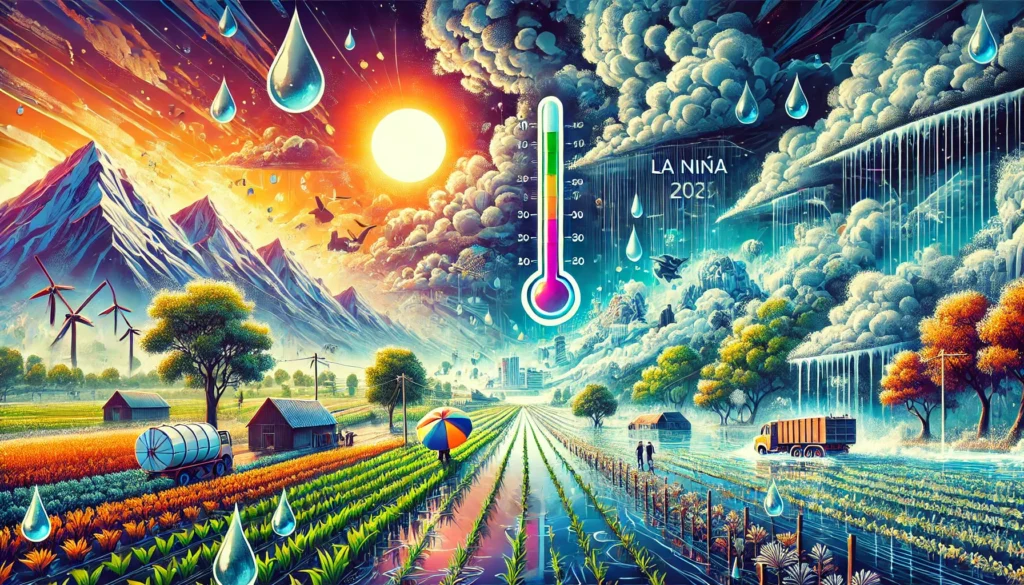
Introduction to La Niña
Definition of La Niña
La Niña, a weather phenomenon characterized by the cooling of ocean surface temperatures in the central and eastern Pacific Ocean, has far-reaching effects on global weather patterns. Its name, derived from Spanish meaning "the little girl," signifies a contrast to El Niño, which involves the warming of these waters. This phenomenon influences atmospheric circulation, causing a ripple effect on climates worldwide, including India.
La Niña vs. El Niño: Key Differences
While El Niño brings drier and hotter conditions, La Niña typically results in cooler and wetter climates in many regions. For India, La Niña often leads to heavier monsoons, cooler winters, and increased agricultural productivity. However, this cooling phase is not without challenges, as the intensity and unpredictability of rains can disrupt farming and infrastructure.
Historical La Niña Years in India
Notable Past Events During La Niña Years
India has experienced several La Niña years that left significant marks on its climate and economy. Notable years like 2010–2011 witnessed intense monsoons, flooding, and increased agricultural output. However, these years also brought challenges, such as excessive rainfall leading to waterlogging and crop damage in certain regions.
Impact on Agriculture and Economy
La Niña years have historically benefited Indian agriculture by boosting water availability for crops, especially rice and wheat. The abundant rainfall ensures robust harvests, leading to lower food inflation and an uptick in rural income. However, unseasonal rains or excessive flooding can disrupt sowing cycles and damage infrastructure, affecting economic stability.
Effects of La Niña on India's Weather in 2025
Winter Season During La Niña
In 2025, La Niña is expected to influence India's winter, bringing colder-than-average temperatures to northern states. Cities like Delhi, Chandigarh, and Shimla might experience extended cold spells, while foggy mornings could disrupt transportation and daily life. For farmers, these conditions could delay the sowing of Rabi crops, such as wheat and mustard.
Monsoon Variability and Rainfall Patterns
La Niña tends to enhance the monsoon’s intensity, often leading to above-normal rainfall in most parts of the country. In 2025, this could result in a prolonged monsoon season with sporadic heavy downpours. While beneficial for reservoirs and groundwater levels, this pattern may trigger floods in vulnerable areas like Assam, Bihar, and West Bengal.
Implications for Agriculture in 2025
The agricultural sector could witness a mix of outcomes. On one hand, increased water availability could boost productivity for water-intensive crops. On the other hand, excessive rainfall might harm standing crops, delay harvesting, and raise post-harvest losses. Farmers in flood-prone zones will need to adopt adaptive measures to mitigate potential risks.
Positive and Negative Impacts of La Niña on India
Benefits of La Niña
- Enhanced Crop Yields: Ample rainfall replenishes soil moisture and boosts crop growth.
- Improved Water Resources: Reservoirs and rivers benefit from increased inflow, aiding irrigation and hydropower projects.
- Cooler Winters: Reduced heat stress on livestock and crops contributes to better agricultural outcomes.
Challenges and Risks
- Flooding Risks: Excessive rainfall could inundate low-lying regions, displacing communities and damaging infrastructure.
- Unpredictable Weather: Sudden weather anomalies like hailstorms may damage crops.
- Economic Strain: Recovery from floods requires significant financial resources, impacting development programs.
Preparing for La Niña in 2025
Government Policies and Forecasting
To address La Niña's impacts, the Indian government has been enhancing meteorological forecasting and disaster management systems. Initiatives like real-time flood alerts, crop insurance schemes, and drought-proofing measures are crucial for mitigating potential risks.
Strategies for Farmers and Industries
Farmers can benefit from adopting climate-resilient practices, such as using drought- and flood-tolerant crop varieties. Industries, especially agriculture-dependent ones, must diversify supply chains to counter disruptions. Proper planning for irrigation and drainage will help optimize water use during La Niña-induced rainfall.
FAQs on La Niña and Its Impact on India
What is La Niña, and How Does It Affect India?
La Niña is a climate phenomenon characterized by cooler-than-normal Pacific Ocean temperatures. For India, it typically results in stronger monsoons, cooler winters, and a mixed bag of benefits and challenges for agriculture and water resources.
Can La Niña Bring Extreme Weather Events?
Yes, La Niña can lead to extreme weather events like floods, unseasonal rains, and cold waves, impacting infrastructure and livelihoods.
How Does La Niña Compare to El Niño?
While La Niña brings cooler and wetter conditions, El Niño causes warmer and drier climates. Both phenomena significantly impact India’s weather patterns.
What Can Farmers Do to Prepare for La Niña?
Farmers should invest in climate-resilient crops, improve drainage systems, and consider insurance schemes to safeguard against potential losses.
Will La Niña Benefit India’s Economy in 2025?
La Niña could boost agricultural productivity and rural incomes, but its challenges, like floods and infrastructure damage, may offset some of these gains.
If some one needs to be updated with hottest technologies
afterward he must be pay a quick visit this website and be up to
date everyday.
This piece of writing presents clear idea in support of the new people of blogging, that genuinely how to do blogging and site-building.